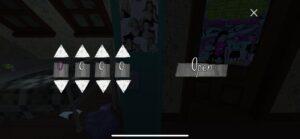Gone Home is a walking simulator game published by Fullbright Company 2013 initially on PC, then on a range of other platforms including Playstation and Nintendo Switch. The player walks through the perspective of protagonist Katie who returns home to look for clues on the mysterious disappearance of her sister Sam. The mechanics of the game are designed such that the narrative of what led up to and ultimately caused Sam’s disappearance is gradually revealed to the player through letters that Sam has written for Katie, that are read in Sam’s voice as the player picks up certain sentimental notes and items. This creates dynamics in which the player wants to explore the house to uncover more dramatic tidbits and sets up discovery and narrative as core game aesthetics.

The mechanics are designed such that at first you can explore the house in almost any order so different parts of the backstory are revealed at any time. This deepens the mystery because you don’t know if the disappearance is supernatural (relating to Sam’s new allegedly haunted house), or if it has something to do with their father’s failing writing career, or their moms thriving conservationist career and potential secret lover.



The game also distinguishes between items that you interact with that enrich the context/character characterization, verses those that reveal backstory that advances Katie’s uncovering of the mystery. The mechanics behind which items do what feed into interaction loops and arcs that teach the player what items they should focus on looking for.
For example, when I started with a mental model that any item I picked up could be informative and so I interacted with everything. However, the feedback I got from some items (e.g. a cassette tape) was that I would not get any critical information. Conversely, interacting with things like folders would often reward me with feedback in the form of additional story revelations. These interaction loops shifted my game dynamics from examining everything, to focusing on a specific subset of things in a way that felt less exhausting.

The mystery is also deepened by the inclusion of locked rooms and code protected lockers. It made the story more dramatic in the sense that the revelations felt more intimate because they were locked away. These mechanics also enhanced the game dynamics in that now, instead of just looking for the next portion of the story, I was looking for items that might be a part of the puzzle, or a handy clue. At first this was challenging because I felt like I had to go over every detail of anything I picked up unsure if certain numbers or words were clues, and this dynamic was somewhat frustrating. However, when I eventually did start finding real clues, there were mechanics built into the game to explicitly tell me that this information was relevant (e.g., a note at the bottom of the screen saying, “the first part of the locker code has been added to your inventory”)
.





